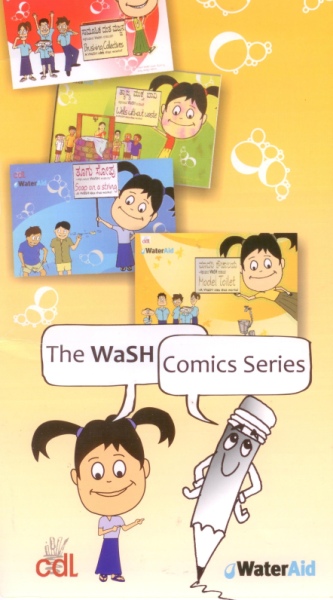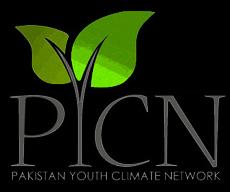Climate and Weather
Comics for a cause: The WaSH series
Posted on 17 Aug, 2010 05:54 PMComics for entertainment, mythology, science, values etc. are common, However comics for a cause is something that was unheard until now. On 14 August, a Bangalore based NGO CDL along with WaterAid India launched their comics for a cause called the WaSH (Water, Sanitation and Hygiene) series.
As they say a picture is worth a thousand words, some one also said a comic is worth a thousand pictures. Cartoons have proved to be the best method to penetrate into young minds and make them realize even complex problems, often these young minds revert back with never thought before solutions. This was the ideology behind the WaSH series. WaSH is something that has been created for the young minds and have come out of similar young minds. Yes, WaSH characters and stories are ideas of children from rural and urban poor areas.

Pakistan flood relief appeal
Posted on 17 Aug, 2010 12:11 PMContent Courtesy: Pakistan Youth Climate Network

Indo-Gangetic river basins: Summary situation analysis by Challenge Program on Water and Food
Posted on 16 Aug, 2010 07:37 PMThe paper by the Challenge Programme on Water and Food (CPWF) - Basin Focal Project provides a brief situation analysis related to water, agriculture & poverty, water resources, water productivity, institutional aspects and opportunities & risks related to the development of the Indo-Gangetic basin (IGB). Management of IGB water resources presents some formidable challenges and, therefore, steps must be taken towards integrated management of the IGB’s water and land resources in order to ensure the future sustainability of all production and ecosystems in the basin.
Leh cloud-burst: A first-hand account
Posted on 16 Aug, 2010 11:44 AMMidnight, August 6, 2010: "Link, wake up! Water is coming in from the roof!" My mother and I were in Leh, Ladakh, staying at "Eco-Homestay," the house of Mr. Sonam Gyatso and family, in Lower Sankar. The house was made in a hybrid of traditional and modern construction techniques: the main hall in the house was concrete, while rooms surrounding it were made of sun-dried mud bricks, and roofed with Poplar beams, a mesh of willow branches, and a thick pad of fine clay-like mud. The house incorporated passive solar building techniques, such as a direct-gain room, and a Trombe wall, and had solar-powered lighting. It had been raining since evening, and by midnight the clay roof was saturated and began to leak.
We were in Leh for the express purpose of meeting with Helena Norberg-Hodge, the founder of the International Society for Ecology and Culture, co-founder of the International Forum on Globalization, founder of the Ladakh Ecological Development Group, and founder of the Women's Alliance, Ladakh. We had learned of her online, seeing an article of hers in CounterCurrents.org, and watching her video "Ancient Futures." She is the only person who has critically witnessed the "development" of Ladakh, from complete self-sufficiency in an exceedingly fragile eco-system, to the disaster under which it writhes today. She has seen how "development" pulls people into a money economy, increases the distance between production and consumption, brings reliance on fossil fuels (especially apparent in Leh where fuel and commodities are trucked in over a hazardous two-day journey from lower altitudes), results in urbanization and rural-urban migration, and brings psychological impoverishment to the people it is inflicted upon. For 35 years, she has been working to bring safe, stable, and ecologically sound development to the region through her organizations. Her work today, no longer limited to Ladakh, is focussed on spreading economic literacy among people throughout the planet, educating about the deeper impacts of globalization and today's consumer mono-culture. Garnered from her years of observation and research, she has an important message for humanity today, which is what prompted us to go and meet her.
Emerging groundwater crisis in urban areas – A case study of Bangalore city
Posted on 16 Aug, 2010 07:14 AMThe paper by the Institute for Social and Economic Change documents the case of Ward No. 39 situated at the outskirts of the Bangalore city to understand the emerging groundwater crisis due to overdraft in urban areas. Bangalore has no perennial river, which resulted in the growth of many lakes, acting as a source of groundwater recharge earlier.
Increasing groundwater dependency and declining urban water quality – A comparative analysis of four South Indian cities
Posted on 15 Aug, 2010 07:18 AMThis paper by the Institute of Social and Economic Change (ISEC) examines the extent of groundwater dependency and quality status in four South Indian cities viz., Hubli, Dharwad, Belgaum and Kolar cities. Widespread water shortage problems have resulted in increased dependency on groundwater with tapping the resources to unsustainable levels. In Karnataka, out of 208 urban local bodies that come under Karnataka Urban Water Supply and Drainage Board, 41 depend on groundwater.
The neocolonial path to power - Article in the Himal Southasian
Posted on 13 Aug, 2010 10:15 AMThis is a translation from the Nepali of an article that first appeared in Nepal magazine on 11 July 2010. Dipak Gyawali is member of the panel of experts reviewing the Mekong River Commission’s Basin Development Plan and vice-chair of the technical committee of the UN’s World Water Assessment Programme. He was Nepal’s Minister for Water Resources during 2002-03.
Many Nepalis would be shocked to hear that Bhutan will face load- shedding from the coming winter. The citizens of Nepal have, after all, been told for decades that Bhutan has done a great job of developing hydroelectricity, that it has earned significant money by exporting electricity to India, and thus it has been able to achieve the highest per capita income in Southasia. Conversely, Nepal has been ridiculed for wallowing in ‘empty nationalism’ and stirring ‘needless’ controversies over the Mahakali Treaty of 1996 (for water sharing on the Mahakali River) as well as hydropower projects such as the West Seti, both of which involve export of electricity to India.
Research reports of the National Institute of Hydrology (1996-2001) - Highlights
Posted on 12 Aug, 2010 10:29 PM
The India Water Portal is pleased to announce to its users, that a comprehensive archive of over two hundred and fifty technical research reports of the National Institute of Hydrology (NIH), Roorkee, have now been made available on the portal, and in the public domain for the first time.
Indian flash floods kill 170, hundreds of people still missing
Posted on 12 Aug, 2010 03:23 PM
"So far, we have recovered 170 bodies, 140 of whom have been identified," said an officer in Leh's police control room, adding that up to 300 people were still unaccounted for.
Aid workers also estimate that 10 to 12 villages remain inaccessible due collapsed bridges and blocked roads where landslides deposited boulders and mud up to 15 feet high (4 metres).
Mountains of concrete: Dam building in the Himalayas - A report by International Rivers Network
Posted on 11 Aug, 2010 07:38 PMThis document by International Rivers Network provides a background for the recent plans initiated by India, Nepal, Pakistan and Bhutan to build several hundred dams on the Himalayan mountains, which store vast amounts of water and with their high slopes and fast moving rivers, present a huge potential for generating hydropower.
India, Nepal, Pakistan and Bhutan have been facing the increasing challenges of meeting their rising elecricity and energy needs and hydropower dams in the Himalayas are being proposed as solutions to meet a considerable part of these requirements.
The document examines the various arguments that have been put forward against the building of the dams as against the proposed advantages that the dams are claimed to have for these four countries, which share common geographical, topographical and eco-climatic features but have starkly different political and economic contexts.





